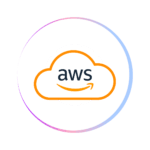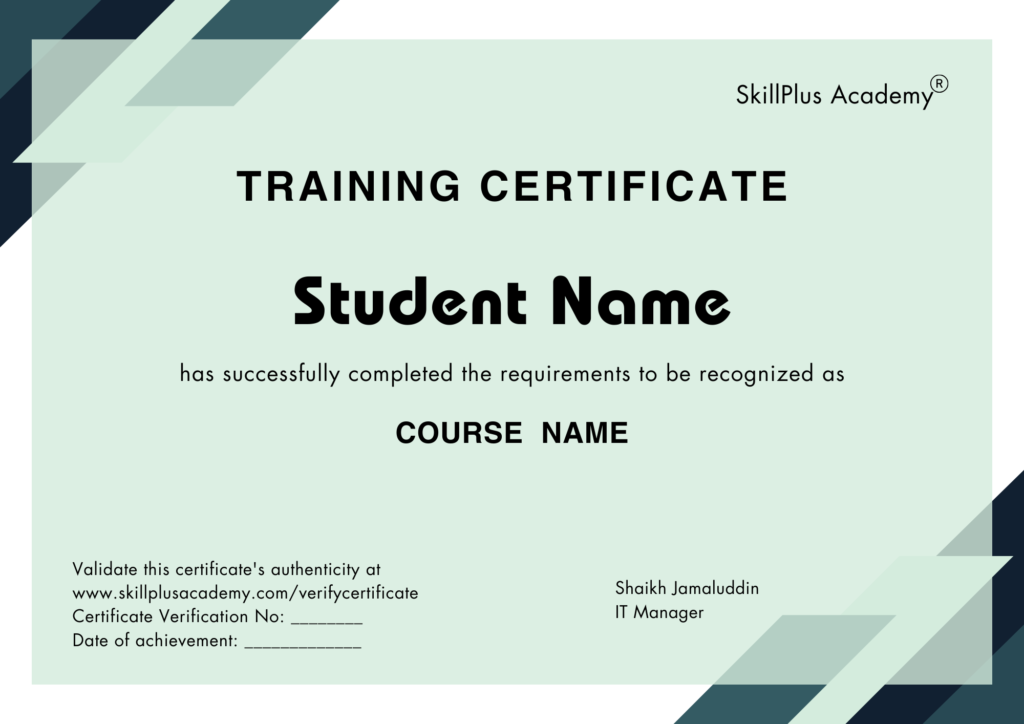RHCSA (RedHat 9) Training & Certification Course
Red Hat Enterprise Linux is the leading open-source platform for modern data centers, offering a stable, flexible foundation that adapts to business changes. Red Hat’s broad portfolio of open source solutions is used in some of the world’s most demanding data centers in industries including airline, telecommunications, commercial banking, healthcare, and federal government. More than 90% of Fortune Global 500 companies use Red Hat products and solutions.
RHCSA (RedHat 9) Certification Course Overview
Red Hat incorporates this real-world production experience into training, certification, and consulting services. Professionals trust Red Hat Training and Certification to enhance and prove their skills not only in Linux but also in emerging technologies like OpenStack, containers, and more. Red Hat’s robust Linux curriculum is the foundation for developing skills related to Red Hat technologies. This curriculum prepares you to adopt Linux by focusing on the key skills and tasks needed to become a full-time Linux administrator, then broadening to enterprise-wide Linux system administration.
RedHat Linux 9 (RHCSA) Syllabus
REDHAT SYSTEM ADMINISTRATION I (RH124)
- What is Linux?
- RedHat 9 Installation
- Accessing the Command Line
- Accessing the Command Line Using the Desktop
- Executing Commands Using the Bash Shell
- Describing Linux File System Hierarchy Concepts
- Specifying Files by Name
- Managing Files Using Command-line Tools
- Making Links between Files
- Matching File Names with Shell Expansions
- Reading Manual Pages
- Reading Info Documentation
- Editing Text Files from the Shell Prompt
- Changing the Shell Environment
- Describing User and Group Concepts
- Gaining Superuser Access
- Managing Local User Accounts
- Managing Local Group Accounts
- Managing User Passwords
- Managing File System Permissions from the Command Line
- Managing Default Permissions and File Access
- Listing Processes
- Controlling Jobs
- Killing Processes
- Monitoring Process Activity
- Identifying Automatically Started System Processes
- Controlling System Services
- Accessing the Remote Command Line with SSH
- Configuring SSH Key-based Authentication
- Customizing OpenSSH Service Configuration
- Describing System Log Architecture
- Reviewing Syslog Files
- Reviewing System Journal Entries
- Maintaining Accurate Time
- Describing Networking Concepts
- Validating Network Configuration
- Configuring Networking from the Command Line
- Configuring Host Names and Name Resolution
- Managing Compressed tar Archives
- Transferring Files between Systems Securely
- Synchronizing Files between Systems Securely
- Registering Systems for Red Hat Support
- Explaining and Investigating RPM Software Packages
- Installing and Updating Software Packages with Yum
- Enabling Yum Software Repositories
- Managing Package Module Streams
- Identifying File Systems and Devices
- Mounting and Unmounting File Systems
- Locating Files on the System
- Analyzing and Managing Remote Servers
- Getting Help from Red Hat Customer Portal
REDHAT SYSTEM ADMINISTRATION II (RH134)
- Writing Simple Bash Scripts
- Scheduling a Deferred User Job
- Scheduling Recurring User Jobs
- Scheduling Recurring System Jobs
- Managing Temporary Files
- Adjusting Tuning Profiles
- Influencing Process Scheduling
- Interpreting File ACLs
- Securing Files with ACLs
- Changing the SELinux Enforcement Mode
- Controlling SELinux File Contexts
- Adjusting SELinux Policy with Booleans
- Investigating and Resolving SELinux Issues
- Adding Partitions, File Systems and Persistent Mounts
- Creating Logical Volumes
- Extending Logical Volumes
- Mounting Network-Attached Storage with NFS
- Configuring SMB Server
- Selecting the Boot Target
- Resetting the Root Password
- Repairing File Systems Issues at Boot
- Managing Server Firewalls
- Controlling SELinux Port Labelling
- Automating Installation with Kickstart
Choose Your Preferred Learning Mode
1-TO-1 TRAINING
- Custom Learning Materials
- Trainer Support on WhatsApp
- Flexible Scheduling
- Boosts Confidence
GROUP TRAINING
- Collaborative Learning
- Commitment and Inspiration
- Peer Support
- Cost-Effective Option
SELF-PACED COURSES
- Access Anytime, Anywhere
- Personalized Learning Pace
- Community support
- Cost-Effective Option
RHCSA Training Batch Schedule
Date | Duration | Batch Type | Mode |
26th February'25 (Ongoing Batch) | 45 Hrs. / 1 Hr. | Weekdays - Mon to Fri | Offline / Online |
30th April'25 (Upcoming Batch) | 45 Hrs. / 1 Hr. | Weekdays - Mon to Fri | Offline / Online |
Benefits of SkillPlus RedHat Linux Course
What You Need?
- Practical knowledge and exposure relevant to the current industry/job needs
- Personalized Attention and help to make progress in my learning
- Curriculum that is crafted for success
- 24/7 Support at every step
What SkillPlus Provides?
- Live instructor-led online classes by industry experts
- 1:1 Premium Training to resolve all your doubts
- Covers all the core topics and practical projects with industry relevance
- Provides 24/7 WhatsApp Support
What Others Provides?
- No such feature is provided or others focus on pre-recorded content
- No personal attention, Online recordings are common for everyone
- May or may not cover all the essential topics
- May offer limited support or none at all
Get Proof For Your Skill - Training Certificate
Elevate your career with a respected certificate.
Gain credibility in the field.
Connect with experts and peers.
Elevate your career with a respected certificate.
Attract exciting job prospects and promotions.
Jobs that require these Skills
Linux System Administrator • Cloud Engineer • DevOps Engineer • Network Engineer • Technical Support Engineer
Companies Hiring for this Skill

















RHCSA Certification Course FAQs
Our training courses teach you the fundamentals of each of our technologies with practical use-cases and hands-on labs designed to help you use our products successfully. By certifying those skills, you prove what you know and can do and validate your knowledge to the market or an employer.
Depending on the course or certification, we offer a number of learning styles for you. We conduct classroom, virtual and on-site training.
Performance-based testing is testing by doing—that is, by having you perform real-world tasks similar to those you must perform in a job role. All Red Hat certification exams are performance-based tests, giving you the hands-on-practical application you need to demonstrate your skills.
Organizations hiring employees, contractors and consultants can look to Red Hat certifications as an input into hiring, assignment, promotion and other management decisions.
You must be 16 or older to take an exam. Most testing sites require government-issued photo identification to verify age and identity.
You will be issued an electronic certificate that will be attached to your results email.
